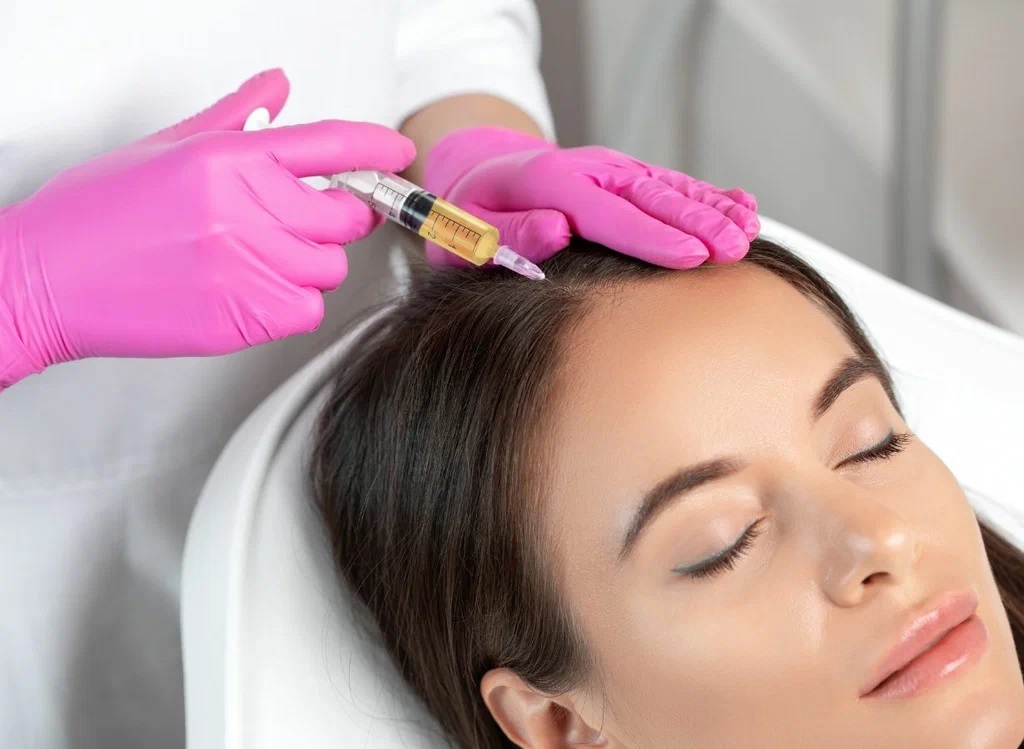Hair loss is a common issue affecting both men and women, and finding the right treatment can be challenging. While traditional hair transplants have been the go-to solution for permanent hair restoration, non-surgical options like PRP Hair Treatment in Islamabad are rapidly gaining popularity. Both treatments offer distinct benefits, but understanding their differences can help you choose the most suitable option for your hair restoration goals.
This blog will compare PRP therapy and hair transplant procedures, discuss their effectiveness, advantages, and limitations, and help you determine which treatment aligns best with your needs.
Understanding PRP Hair Treatment
PRP, or Platelet-Rich Plasma therapy, is a non-surgical treatment that uses the patient’s own blood to stimulate hair follicles. A small amount of blood is drawn from the patient, processed in a centrifuge to extract platelet-rich plasma, and then injected into thinning areas of the scalp.
PRP works by:
- Activating dormant hair follicles
- Strengthening existing hair roots
- Improving scalp circulation and nutrient delivery
- Reducing inflammation around hair follicles
Because PRP uses your own blood, it is completely natural, minimally invasive, and carries a very low risk of side effects. It is ideal for individuals with early-stage hair thinning, weak hair roots, or those looking to complement other hair restoration methods.
Understanding Hair Transplants
Hair transplant surgery involves transferring hair follicles from a donor area (usually the back or sides of the scalp) to areas experiencing thinning or baldness. There are two main techniques:
- FUT (Follicular Unit Transplantation): A strip of scalp is removed from the donor area, and individual follicular units are transplanted to thinning regions.
- FUE (Follicular Unit Extraction): Individual hair follicles are extracted and transplanted, leaving minimal scarring.
Hair transplants provide permanent results, as transplanted follicles are genetically resistant to hair loss. However, the procedure is invasive, requires downtime, and can be costly.
PRP vs. Hair Transplant: Key Differences
FeaturePRP Hair TreatmentHair TransplantInvasivenessNon-surgical, injections onlySurgical, involves graft extraction and implantationRecovery TimeMinimal, patients can resume activities immediatelySeveral days to weeks of recovery, potential swelling or sorenessResults TimelineGradual improvement over 3–6 monthsImmediate density from transplanted follicles, full results in 6–12 monthsNaturalnessWorks with existing follicles, gradual natural growthPermanent and natural if done correctly, but may require skill for seamless blendingPain & DiscomfortMild discomfort from injectionsModerate discomfort during and after surgeryCostGenerally lower than surgeryHigher cost due to surgical procedure and expertiseBest ForEarly-stage thinning, weak hair roots, maintenanceExtensive baldness, receding hairlines, permanent restoration
Advantages of PRP Hair Treatment
PRP has several benefits that make it a popular choice:
- Minimally Invasive: No surgery, anesthesia, or scarring.
- Natural Process: Uses your own blood, reducing risk of allergic reactions.
- Quick Procedure: Typically completed within 45–60 minutes.
- Gradual, Natural Results: Hair grows progressively, blending naturally with existing hair.
- Complementary: Can enhance hair transplant outcomes by strengthening transplanted follicles and accelerating healing.
Advantages of Hair Transplants
Hair transplants offer a permanent solution for hair loss and are ideal for individuals with significant baldness. Key benefits include:
- Permanent Hair Restoration: Transplanted follicles are resistant to genetic hair loss.
- High Density: Provides noticeable density and coverage in bald areas.
- One-Time Procedure: Often requires fewer follow-up treatments compared to PRP.
- Long-Term Solution: Transplanted hair grows naturally and continues to thrive for years.
Limitations of PRP
While PRP is highly effective for many patients, it does have limitations:
- Results are gradual and require multiple sessions.
- Less effective for individuals with advanced baldness or complete hair loss.
- Maintenance sessions are needed every 6–12 months for sustained results.
Limitations of Hair Transplants
Hair transplant surgery also has limitations:
- Higher cost compared to non-surgical options.
- Surgical risks, including infection, scarring, or temporary shock loss.
- Recovery time and post-operative care are required.
- Requires sufficient donor hair for optimal results.
Combining PRP with Hair Transplants
For many patients, the most effective approach is a combination of PRP and hair transplant surgery. PRP can be applied before and after the transplant to:
- Enhance the survival of transplanted follicles
- Accelerate healing and recovery
- Strengthen both new and existing hair
- Improve overall hair density and quality
This combined strategy ensures maximum results, making it an excellent option for patients seeking both immediate and long-term hair restoration.
Choosing the Right Treatment for You
When deciding between PRP and a hair transplant, consider:
- Extent of Hair Loss: PRP is ideal for early-stage thinning; transplants suit more advanced baldness.
- Desired Results: If you want gradual, natural improvement, PRP may suffice. For permanent coverage, transplants are preferable.
- Budget and Recovery: PRP is generally more affordable and requires minimal downtime, while transplants involve higher costs and recovery time.
- Combination Therapy: For the best long-term results, many patients benefit from using PRP alongside a hair transplant.
Consulting with a hair specialist in Islamabad will help assess your hair loss pattern and determine the most suitable treatment plan for your specific needs.
Why Choose PRP Hair Treatment in Islamabad?
Islamabad has become a hub for advanced hair restoration treatments, offering access to highly trained dermatologists and cutting-edge PRP technology. Patients benefit from:
- Professional and hygienic clinical environments
- Experienced specialists who personalize treatment plans
- State-of-the-art PRP preparation and injection techniques
- Comprehensive consultation to determine the best hair restoration strategy
These advantages make Islamabad an ideal choice for those seeking effective, safe, and long-lasting hair restoration treatments.
Conclusion
Both PRP therapy and hair transplants offer effective solutions for hair loss, but their suitability depends on the patient’s hair condition, goals, and preferences. PRP Hair Treatment in Islamabad is a non-surgical, natural approach ideal for strengthening hair roots, stimulating follicles, and improving overall hair health. Hair transplants, on the other hand, provide permanent restoration for advanced baldness or receding hairlines.
For professional guidance and expert care, the Dynamic Aesthetic Clinic in Islamabad provides specialized PRP Hair Treatment in Islamabad and hair transplant procedures, ensuring customized treatment plans that deliver natural, long-lasting, and effective hair restoration results.





Comments